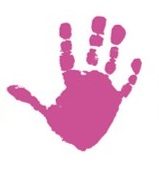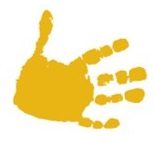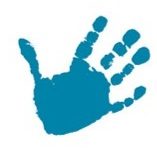Here are some fun activities linked to number, shape, measure and problem solving. Also some weblinks.

Number
Bubbles – Blow bubbles and try and count how many bubbles you burst together. Try and beat your record. ![]()
![]()
![]()
Estimate and Count – Ask your child to guess how many windows are on your home. How many doors? How many steps? Then go and count. ![]()
![]()
Counting Practise – Take a cup and some coins. These must be identical but it doesn’t matter what type they are. You need about ten. Ask your child to sit facing away from you and the cup. One at a time, drop coins into the cup. Your child has to listen and count. When you stop, they must try to tell you how many coins are in the cup. (This is harder than it sounds!) Repeat this. Can they be correct three times? Challenge: Drop coins into the cup as they count, eyes shut! Then, without showing them how many in the cup, show them that you are taking one out. How many now? ![]()
![]()
Role Play – Make a pretend shop or cafe with whatever you have lying around. Make price lists, price tickets. You can even make pretend money (or use real money but be careful). ![]()
![]()

Match and Sort – Use old containers or boxes to make a garage for toy cars. Use dots or number above each garage door. Play a game; ‘Can you put the orange car in garage number four?’. You can use the same idea to make houses for toy figures. ![]()
![]()
Towers – Build a short tower with Lego. Without showing it, put it behind your child’s back. Ask them if they can count how many bricks are in the tower by touch, without looking. ![]()
![]()
One To One Count – For younger children. If you have pom poms, stones, even lego bricks. Use an egg carton, or between five and ten empty containers. Show your child how to place one pom pom into each container. You can count while you do this. Then your child can try placing the objects into each cup while you count for them. This models how to count one object as it is dropped into each container. Older children could use tongs to pick up and place each object. ![]()
![]()
![]()
Station – Make a maths station with lots of little items for your child to count. ![]()
![]()
Collections – If you can get outside, make a collection. Gather whatever you can find; stone, sticks, pine cones. Sort the collection by counting, sort by sizes, colours, patterns. Use your imagination. ![]()
![]()
![]()
Counting Games – Play board games! If you don’t have any, make a simple snakes and ladders game by drawing out a board with pens and cardboard. Use the inside of a flattened cereal box, anything you have lying around that you could draw on. You can even make your own dice; look here. ![]()
![]()

Sort It – You may have a collection of buttons, pegs, pens, crayons, play animals, etc. Find containers for the children to sort into. It could be bowls, cake tins, etc. Look carefully at what you are sorting. For example, can you put all the same shapes together? Or, could you sort by: ![]()
![]()
• Size?
• Material? e.g. metal, plastic, wooden, etc.
• Colour?
• Animal?
• Shape?
Categorise – Sorting is a great activity as the children have to use observation skills. Buttons can look very similar but are they really, when you take a closer look, do they have the same number of holes? You might have beads that could be sorted and classified. It might even be that you sort all the tins in the cupboard. Can you find all the soup tins, the tins of tomatoes, and group them together? ![]()
![]()
Counting Tip – It is useful with young children to touch the item as they say the amount with you. There are so many things you could count. How may chairs, cushions, spoons, etc? ![]()
![]()
![]()
Number Hunt – Do a number hunt in your house. Write numbers 1-5 (extend this to 10 for older children) on a piece of paper and hide around the house. ![]()
![]()
Bring Me – Ask the children to bring you 4 apples, 1 orange. Gather anything you have by number. ![]()
![]()
Action – Use exercise as the basis for counting! How many jumps can you do in a minute? How many star jumps can you do before the end of a song? Can you touch your toes ten times without stopping? See our physical section for more ideas. ![]()
![]()
Counting & Number Recognition – A good leaflet from Early Years Scotland with lots of ideas for all age groups. Simple and easy to do. ![]()
![]()
![]()
Gem Hunter – Online 2D shape game ![]()
![]()
Shape
• Can you make a list or a collection of teeny, tiny things? What other words describe small? ![]()
![]()
• Which things are larger than e.g. a cow? Could it be a bus, a whale, a house, a car etc?
Make a list or draw things. ![]()
![]()
• Draw around your hands. Who has the largest hands? How many fingers do you have? ![]()
![]()
Dinner Time – Setting the table has its mathematical relevance. Each person may need a knife and fork and possibly a spoon. Do they each need a plate? Children will need to match the utensils to the amount of people who will be eating. ![]()
![]()

Shape Hunt – A great way to kick start learning about shapes at home is with a ‘shape hunt’ – exploring and identifying shapes in our environment and everyday life. You can go on a shape hunt around your house or garden. Older children can take a checklist or paper to record their findings on, while younger children will enjoy discussing what you see as you go. Photographing the shapes you find is another great idea, with the photos being perfect for compiling into your very own shape book. ![]()
![]()
Make Shapes – Pencils or sticks are such versatile learning materials. They make a great resource for creating 2D (flat) shapes. But you could use anything! What can you find around your house to make a variety of shapes with your child? ![]()
![]()
Cut Outs – Both nursery and school aged children will have lots of fun creating pictures with shapes. If you have scissors, you could supervise your children and cut out a range of different shapes from any old paper, card or materials you have lying about. The shapes can be discussed and combined in different ways. ![]()
![]()
Sing About Shapes Here’s a little song to help young children learn shapes. This could be done with more than one child or join in yourself! Draw some shapes and pass them out. (sing to the tune of If You’re Happy and You Know It). ![]()
![]()
If you’re holding a square stand up!
If you’re holding a square stand up!
If you’re holding a square, if you’re holding a square
If you’re holding a square stand up.
Fantastic Feely Bags Find some items at home, for example a tin of food, a tube of sweets: put them in a bag. The idea being that the children feel the shapes in the bag without looking, trying to identify each shape using only their sense of touch. Discuss – How does it feel? Does it have pointy corners? Does it feel round? Once the children are familiar with names of the shapes, it’s fun to guess the shape they’re holding before revealing it! ![]()
![]()
3D Shape Rhyme Finally here’s a simple 3D shape rhyme to help children connect the name of the shape to real life objects. ![]()
3D Shapes are fat not flat
A cone is like a party hat
A sphere is a bouncy ball
A prism is a building tall
A cylinder is like a can of pop
A cube is like the dice you drop
3D shapes are here and there
3D shapes are everywhere!
Simply walk around your rooms and look for shapes. What can you see?
The first regular shape names they will learn are a square, a rectangle, a
circle and a triangle.
Can you find things to draw around that are circles, triangles etc? You
might find a cup, a plate, a saucer, etc. There will be all kind of sizes;
larger, smaller and wider. If you cannot find the other shapes try and
draw them and cut them out of paper or card. ![]()
![]()
Shape, Sorting, Matching & Measurement – An excellent leaflet from Early Years Scotland, ideas for all ages at home. ![]()
![]()
![]()
Measure
Line Ups – Find your dolls, teddies, play figures etc. Line them up from the tallest to the shortest.![]()
![]()

Measure – How tall are you? Can you measure your height? Young children often like playing with tape measures. Let them just experience and explore. They could also play with rulers and see how long things are. ![]()
![]()
More Measure – Use a spoon as a measuring device. Go around and see if things are the same size, shorter or longer than the spoon. ![]()
![]()
Measure Words – Talk about and compare things that illustrate concepts of full and empty (volume) and light and heavy (weight). ![]()
![]()
Ruler – Make a ‘ruler’ from a strip of paper or cardboard. You can use a cardboard tube. It doesn’t matter what size it is. Use it as a way of measuring heights, lengths and widths around the home. How many strips high is the shelf? How many strips wide is the couch? ![]()
Goldilocks maths – Watch/Read the story of Goldilocks and the Three Bears. Then, Talk about who is the tallest, shortest, oldest etc. How many bowls were there? Can you find 3 different sized bowls in your kitchen and allocate them to a bear. You might use your cuddly toys to represent characters. Can you find 3 spoons, 3 chairs, etc.? Place one bowl
next to one spoon, next to one bear. This is a great 1-1 correspondence activity. Why not make some porridge together? There’s lots of good maths opportunities here; measuring, counting, sharing out. ![]()
![]()
More Volume – Provide cups, bowls and larger containers for the children to measure water or dry ingredients. Let them experiment with a scale (if you have one).![]()
![]()
![]()
Time – Introduce measurement of time. Stress the concept of time when it is “time” for breakfast, lunch and dinner, “time” to go outdoors, “time” for snack and “time” for bed. Use real or toy clocks for kids to practice measuring time. Play an imaginary game where certain things happen at times of the day. ![]()
![]()
Resources – Great resources for open-ended play at home are different-sized objects, drinking cups, empty milk cartons, empty boxes, a ruler, a tape measure, bowls and plates, liquid and dry ingredients, scale, watches or clocks. ![]()
![]()
![]()
Problem Solving
Washing Time – Sorting the washing. Sort by size, colours, types, shapes, patterns. Match socks, sort by family member… ![]()
![]()
How Many Snails – The book, How Many Snails?: A Counting Book by Paul Giganti Jr., is a good opportunity to ask your child the simple questions in the story to get them to think about number and work out simple problems related to analysing data. If you can’t get the book, you can watch and read along on Youtube here. ![]()
![]()

Memory Games – Memory games will develop your child’s memory and attention to detail. Use pairs of matching pictures and turn them all face down, shuffled, on a table. Take turns choosing any two cards and turning them face up on the table. If you turn over a matching pair you keep the cards and if the pair doesn’t match, turn the cards back over until it is your turn to try again. ![]()
![]()
Test It: Stack, Roll or Slide? As children learn 3D shapes, it’s fun to explore how they move and interact with each other. Set up a simple ramp and test each shape to see if it rolls down the hill or slides? Next, test each shape to see if it can be stacked easily on top of another shape. Explore your child’s understanding of why a shape does (or does not) roll, slide or stack. ![]()
![]()
Maze – Build a maze. You can use anything; sticks, lego, blocks, strips of paper, chalk… ![]()
Position Words – Do spatial relations activity: Ask your child to stand behind a chair, next to the chair, in front of a chair, on top of the chair and crouch under the chair. ![]()
![]()
Simple Game – Play noughts and crosses you only need paper and a pencil! ![]()
Move it – For this activity, you’ll need some masking tape and a crumpled ball of paper. The challenge comes when you place the ball of paper in between two lines of masking tape and ask your preschooler to move it outside the lines — without touching it. ![]()
Fit the top – For Fit the Top you will need to dig out your entire mess of a Tupperware collection from that forgotten kitchen cupboard. Or, if your Tupperware is unusually orderly (round of applause from us!), grab a large collection of different sized plastic water bottles and their lids. Water bottles are probably more fun, but using Tupperware does double duty of getting you organised, so maybe a combo of both is best. Lay out all Tupperware and water bottles in one pile and put lids in another. Ask your preschooler to help you organise by finding the right lids to go with the right container.![]()
![]()
Pack your bag – With Pack my Bag, your child can prepare for a real trip or an imaginary one. Have her help you prepare for the day’s activities by asking her questions. What does the weather look like outside? What clothes should we wear? Will we need an umbrella, sunscreen, or a jumper? After we get out of the pool, we will want to get dry, so what will we need? I think we will be gone a while, do you think someone will get hungry? ![]()
![]()
Detective game – In this game, you give a clue about an object, then the child makes a guess. Likely she will guess wrong after just one clue, so you will provide another one and she can guess again. This keeps going until she has guessed correctly. ![]()
![]()
Off the ground – This game is perfect for a cluttered playroom or a small living room. Challenge preschoolers to work together to create a way to walk around the entire room without touching the ground. That might mean stretching from a chair onto a trampoline, then walking across a pool noodle to reach a small table. Encourage children to be creative, and then to try out their plans. ![]()
![]()
Treasure hunt – Not only is a treasure hunt a great way to build problem-solving skills, it can also teach kids how to work together, an integral part of most preschool activities. Decide on 5 to 10 locations around the house and write out one clue to place at each location. Each clue should lead to the next clue. At the end of the clue trail, leave something exciting like a snack or the next fun activity. ![]()
![]()
Paper Airplane Race – Preschoolers can learn how to create a basic paper aeroplane with practice. You can challenge them to take it a step further, however, by asking them to create an plane that can fly the farthest. They’ll need to use their problem-solving skills to figure out how each change slightly affects the way the plane flies. ![]()
Skyscraper – Does your preschooler love to build? If so, hold a contest to see who can build the tallest skyscraper in a given amount of time. You can use whatever building materials you have available — blocks, Lego or other building toys — but emphasise that the “skyscraper” needs to stand independently. Children will realise that they need to think before they begin in order to create a sturdy structure. ![]()
![]()
Scavenger Hunt – Give your child a list of objects they need to find and gather around the home or garden. For extra jeopardy, put a time limit on it. Have a look at the example scavenger hunts on the Health & Wellbeing page. ![]()
![]()
Finding Patterns – This Numberjacks episode has problems within linked to pattern and number. ![]()
![]()
Spot It – Encourage your child to do ‘spot the difference’ puzzles or ‘Where’s Wally’ type puzzles. Here’s an example ‘spot the difference‘, you can search for others. Here are some online ‘Where’s Wally’ puzzles. ![]()
![]()
Numeracy Web Links
BBC Bitesize – Early level maths and numeracy for early level. ![]()
![]()
Toy Theatre Educational Maths Games ![]()
![]()
White Rose Maths – Daily home learning ideas for early years children ![]()
![]()
Request free access to Purplemash.com during Coronavirus ![]()
![]()
Early Maths Collaborative activity ideas ![]()
![]()
Why one to one correspondence matters ![]()
![]()
![]()
Famly YouTube video with Five Quick Learning Ideas. ![]()
There are also other learning links on the useful links page

